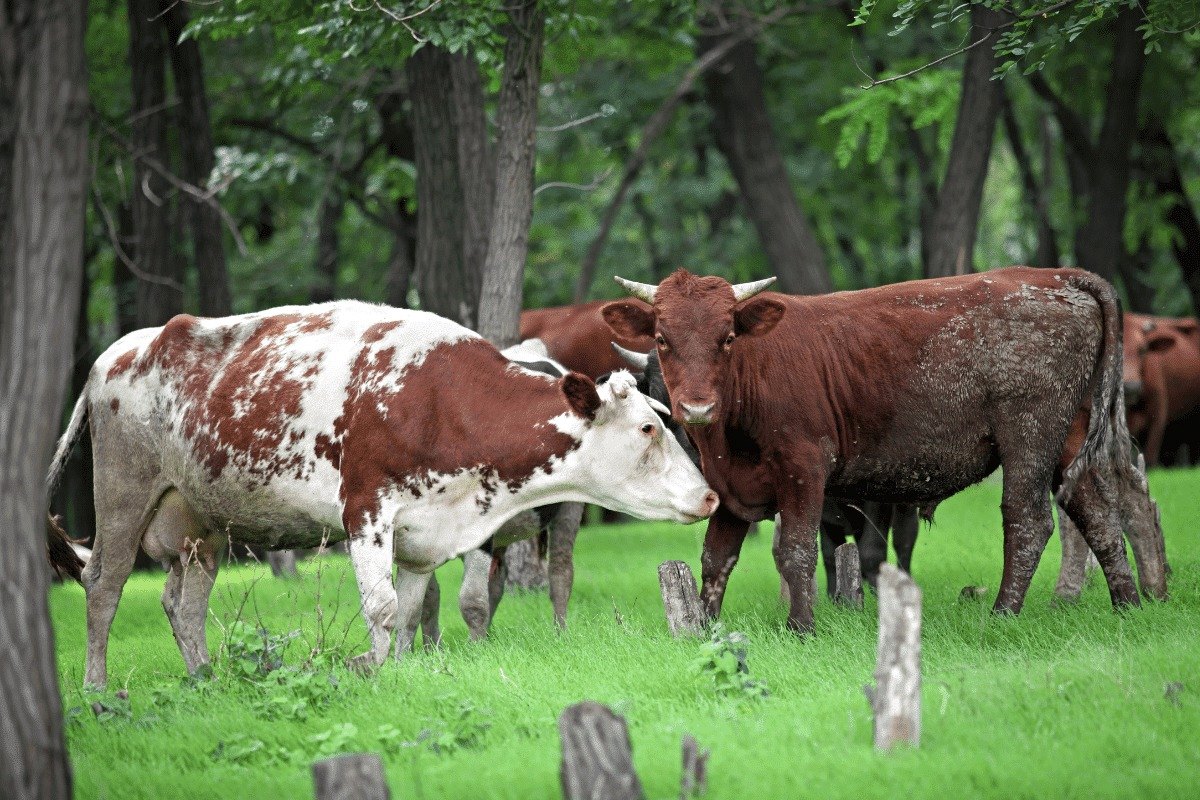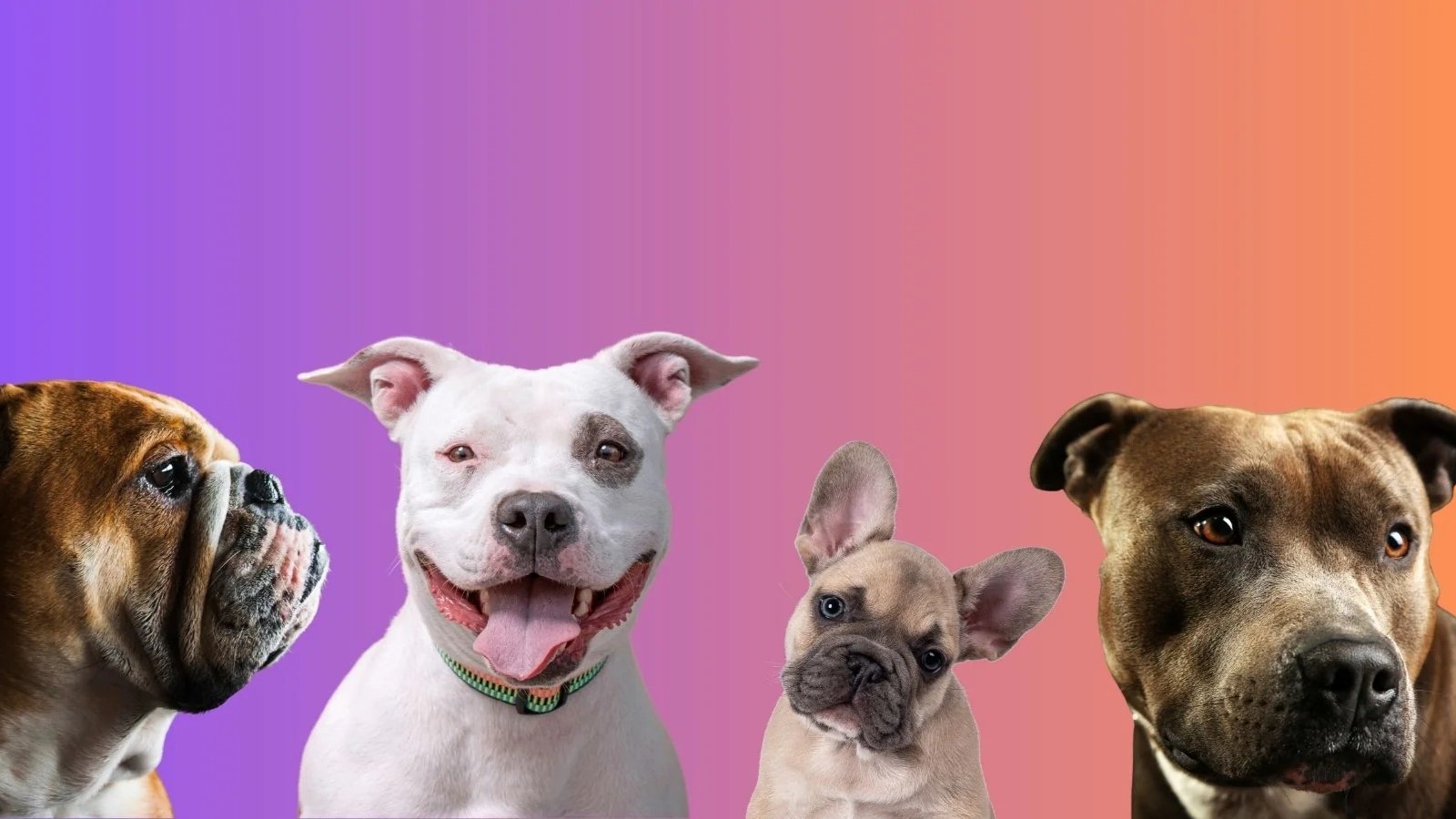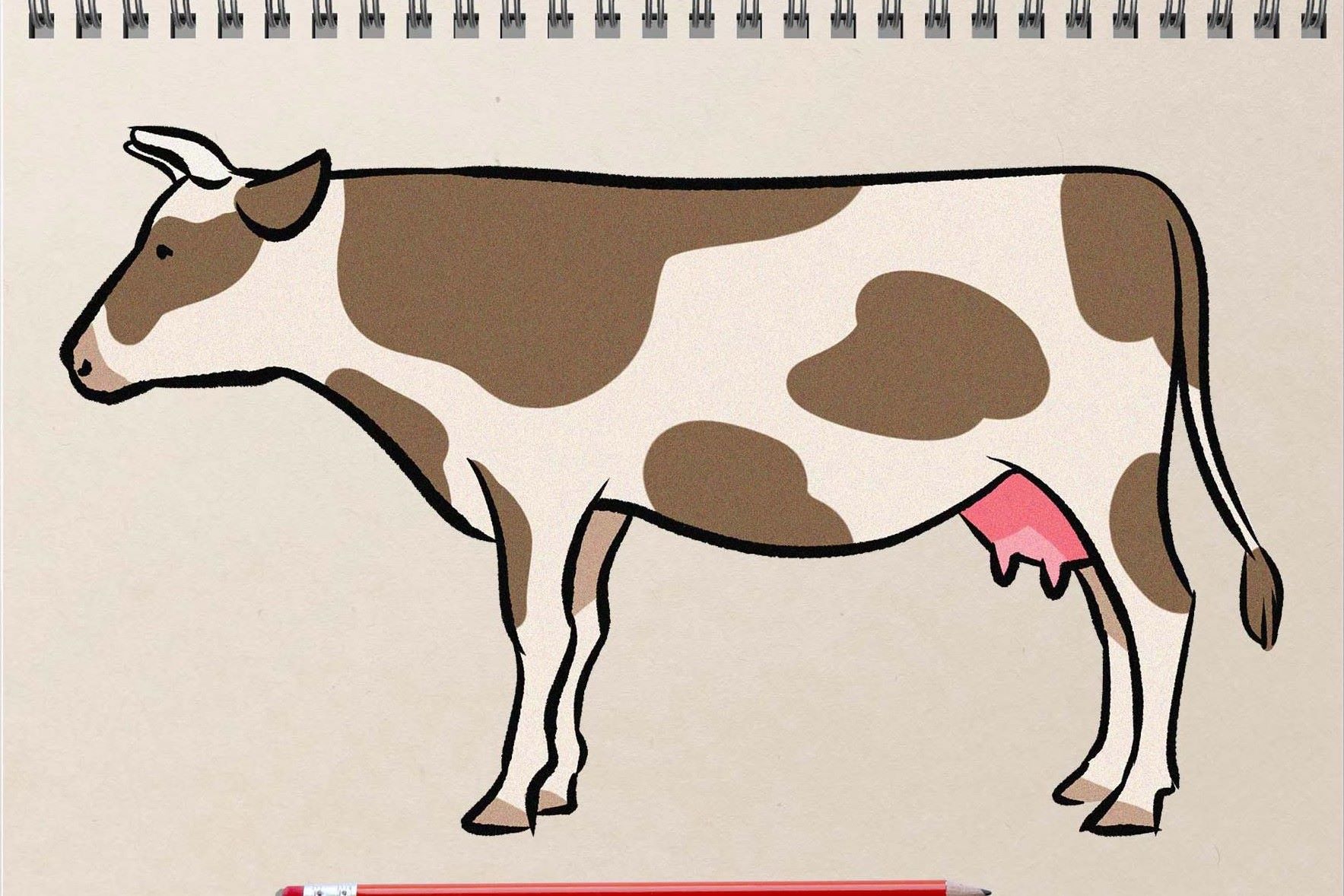Home>Pets & Animals>The Ultimate Guide To Understanding Cows, Bulls, Steers, And Oxen


Pets & Animals
The Ultimate Guide To Understanding Cows, Bulls, Steers, And Oxen
Published: February 11, 2024
Discover everything you need to know about cows, bulls, steers, and oxen in this comprehensive guide. Learn about their behavior, care, and differences. Perfect for pet and animal enthusiasts.
(Many of the links in this article redirect to a specific reviewed product. Your purchase of these products through affiliate links helps to generate commission for Noodls.com, at no extra cost. Learn more)
Table of Contents
- Introduction
- Chapter 1: Anatomy and Physiology of Cows, Bulls, Steers, and Oxen
- Chapter 2: Differences Between Cows, Bulls, Steers, and Oxen
- Chapter 3: Behavior and Social Structure of Cattle
- Chapter 4: Uses and Roles of Cows, Bulls, Steers, and Oxen in Agriculture and Industry
- Chapter 5: Care and Management of Cattle
- Conclusion
Introduction
Cows, bulls, steers, and oxen have long been integral to human civilization, playing crucial roles in agriculture, transportation, and food production. These majestic creatures have captured the imagination of people for centuries, symbolizing strength, resilience, and the pastoral beauty of rural landscapes.
Understanding the nuances of these bovine creatures is not only fascinating but also essential for those involved in animal husbandry, veterinary care, and the agricultural industry. From their anatomy and behavior to their diverse roles in human society, delving into the world of cows, bulls, steers, and oxen unveils a rich tapestry of knowledge and insight.
In this comprehensive guide, we will embark on a journey to unravel the mysteries of these remarkable animals. We will explore their anatomy and physiology, decipher the differences between them, delve into their intricate social structures, and shed light on their indispensable contributions to agriculture and industry. Furthermore, we will delve into the essential aspects of their care and management, providing valuable insights for those entrusted with their well-being.
By the end of this guide, you will gain a profound understanding of these magnificent creatures, appreciating the depth of their significance in our lives and the natural world. So, let's embark on this enlightening expedition into the world of cows, bulls, steers, and oxen, where we will uncover the captivating intricacies of these gentle giants.
Chapter 1: Anatomy and Physiology of Cows, Bulls, Steers, and Oxen
Cows, bulls, steers, and oxen are remarkable creatures with intricate anatomical and physiological features that contribute to their resilience and adaptability. Understanding their physical makeup provides valuable insights into their behavior, health, and overall well-being.
Anatomy
Cows
Cows, the female members of the bovine family, possess distinct anatomical features that facilitate their vital roles in reproduction and milk production. Their udders, comprising four mammary glands, are pivotal for lactation, providing nourishment to their offspring and serving as a primary source of dairy products for human consumption. Additionally, cows exhibit a gentle demeanor, often characterized by a docile nature and nurturing instincts.
Bulls
Bulls, the male counterparts, are known for their muscular build and prominent physical attributes, including robust horns and a powerful stature. Their reproductive anatomy, marked by the presence of testes and the ability to sire offspring, underscores their significance in breeding programs and the perpetuation of bovine genetics.
Steers
Steers, castrated male cattle, undergo physiological changes that distinguish them from intact bulls. Castration results in the absence of testes, leading to altered hormonal profiles and behavioral traits. This process is often carried out to promote docility and manage herd dynamics, particularly in agricultural settings.
Oxen
Oxen, typically referring to trained and working cattle, exhibit notable strength and endurance, traits that are attributed to their robust musculature and efficient respiratory systems. Their anatomical features enable them to perform arduous tasks such as plowing fields and hauling heavy loads, showcasing the remarkable synergy between their physical capabilities and human ingenuity.
Physiology
The physiological intricacies of cows, bulls, steers, and oxen encompass a spectrum of functions, including digestion, reproduction, and thermoregulation. Their ruminant digestive systems, characterized by a multi-chambered stomach, enable efficient processing of fibrous plant material, underscoring their role as herbivorous grazers.
Furthermore, the reproductive physiology of bovines encompasses estrous cycles in females and the production of seminal fluid in males, pivotal for successful breeding and the perpetuation of their species. Additionally, their thermoregulatory mechanisms, such as sweating and panting, are essential for coping with diverse environmental conditions, highlighting their adaptability to varying climates and landscapes.
In essence, the anatomy and physiology of cows, bulls, steers, and oxen converge to form a tapestry of biological marvels, shaping their capabilities, behaviors, and contributions to human society. Delving into these intricacies unveils the awe-inspiring nature of these gentle giants, fostering a deeper appreciation for their place in the natural world.
Chapter 2: Differences Between Cows, Bulls, Steers, and Oxen
Cows, bulls, steers, and oxen, while belonging to the same bovine family, exhibit distinct characteristics and serve varied purposes in human society. Understanding the differences between these members of the cattle kingdom is essential for effective husbandry, management, and utilization in agricultural and industrial settings.
Cows
Cows, as the female counterparts, play a pivotal role in milk production and reproduction. Their primary distinctions lie in their reproductive anatomy and nurturing behaviors. Cows are equipped with udders, facilitating lactation and the production of milk for nourishing their young and providing a valuable source of dairy products for human consumption. Their maternal instincts and gentle demeanor contribute to the nurturing of calves and the maintenance of herd dynamics.
Bulls
Bulls, the male bovines, are characterized by their muscular build, prominent horns, and reproductive anatomy, including testes essential for the production of seminal fluid. Their primary role revolves around breeding and genetic propagation, contributing to the diversity and vitality of bovine populations. Bulls often exhibit assertive behaviors, especially during breeding seasons, underscoring their significance in perpetuating the genetic heritage of cattle.
Steers
Steers, castrated male cattle, undergo physiological changes following castration, leading to distinct behavioral and hormonal differences compared to intact bulls. Castration results in the absence of testes, altering their hormonal profiles and temperaments. This process is often carried out to promote docility and manage herd dynamics, particularly in agricultural settings. Steers are valued for their calm disposition and suitability for various agricultural tasks.
Oxen
Oxen, typically referring to trained and working cattle, exhibit remarkable strength and endurance, distinguishing them from other bovine categories. Their training for draft work and hauling tasks sets them apart, emphasizing their role as indispensable partners in agricultural labor. Oxen showcase a unique synergy between their physical capabilities and human ingenuity, embodying the historical significance of animal-powered agriculture.
In essence, the differences between cows, bulls, steers, and oxen encompass a spectrum of anatomical, physiological, and behavioral traits, each contributing to their distinct roles and contributions to human society. By recognizing and appreciating these differences, individuals involved in cattle management can optimize the utilization of these remarkable creatures, ensuring their well-being and maximizing their potential in various agricultural and industrial endeavors.
Chapter 3: Behavior and Social Structure of Cattle
The behavior and social structure of cattle are fascinating and complex, reflecting the intricate dynamics within bovine communities. Understanding these aspects is crucial for effective husbandry, management, and the promotion of animal welfare.
Social Structure
Cattle, including cows, bulls, steers, and oxen, exhibit a hierarchical social structure within their herds. This hierarchy is often established through subtle interactions, including body language, vocalizations, and physical posturing. Dominance among individuals is a key factor in shaping the social order, influencing access to resources such as food, water, and resting areas. Bulls, especially during breeding seasons, may assert dominance to establish mating privileges and maintain order within the herd.
Communication
Communication plays a pivotal role in the social dynamics of cattle. These animals utilize a diverse range of vocalizations, including lowing, bellowing, and mooing, to convey various messages within the herd. Additionally, body language, such as ear positioning, tail movements, and postural cues, serves as a means of non-verbal communication, enabling individuals to express emotions, intentions, and social status.
Herd Behavior
Cattle are inherently social animals, exhibiting strong affiliative bonds within their herds. These bonds foster cooperation, mutual protection, and the sharing of resources. In the wild, herd behavior serves as a mechanism for survival, enabling collective vigilance against predators and the efficient utilization of grazing areas. Even in domestic settings, the innate herd instinct remains prevalent, shaping the interactions and dynamics within cattle populations.
Agonistic Behavior
Agonistic behavior, including dominance displays, confrontations, and territoriality, is integral to the social dynamics of cattle. Bulls may engage in sparring matches to establish dominance hierarchies, while cows exhibit protective behaviors towards their calves, ensuring their safety within the herd. Understanding and managing agonistic behavior is essential for maintaining harmonious herd dynamics and minimizing potential conflicts.
In essence, the behavior and social structure of cattle reflect a tapestry of intricate interactions, communication modalities, and innate instincts. By delving into these aspects, individuals involved in cattle management can foster environments that align with the natural inclinations of these remarkable creatures, promoting their well-being and harmonious coexistence within agricultural and husbandry settings.
Chapter 4: Uses and Roles of Cows, Bulls, Steers, and Oxen in Agriculture and Industry
Cows, bulls, steers, and oxen play diverse and indispensable roles in agriculture and various industrial sectors, showcasing their versatility and contributions to human endeavors. These remarkable creatures have been integral to human civilization for centuries, offering their strength, labor, and resources to support a wide array of activities.
Agriculture
Cows
Cows are pivotal in dairy farming, providing a sustainable source of milk, cheese, butter, and other dairy products. Their nurturing nature and ability to produce high-quality milk make them essential assets in the dairy industry, contributing to the production of nutritious food for human consumption.
Bulls
Bulls serve as the cornerstone of breeding programs, contributing to the genetic diversity and improvement of bovine populations. Their role in siring offspring with desirable traits is instrumental in enhancing the overall quality and resilience of cattle breeds, thereby bolstering agricultural productivity.
Steers
Steers, with their calm demeanor and strength, are valuable assets in various agricultural tasks, including plowing fields, hauling loads, and providing draft power. Their contributions to agricultural labor underscore their significance in facilitating essential farming activities, particularly in regions where mechanized equipment may be limited.
Oxen
Oxen, trained and adept at draft work, have historically been instrumental in powering agricultural operations. From tilling fields to transporting harvested crops, oxen exemplify the enduring partnership between humans and animals in agricultural labor, offering sustainable and reliable means of harnessing natural power.
Industry
Cattle also play crucial roles in various industrial sectors, showcasing their adaptability and utility beyond traditional agricultural settings.
Leather and Hide Production
The hides and skins of cattle, processed into leather, serve as fundamental materials in the production of footwear, apparel, upholstery, and a myriad of leather goods. This highlights the economic significance of cattle in the leather industry, contributing to the manufacturing and fashion sectors.
Meat Production
Cattle are a primary source of high-quality meat, supplying beef for human consumption and culinary purposes. The meat industry relies on cattle for the production of diverse cuts, processed meats, and beef by-products, catering to global demand for protein-rich food products.
Biomedical and Pharmaceutical Applications
Cattle contribute to the biomedical and pharmaceutical sectors through the production of vaccines, pharmaceuticals, and biomedical materials derived from bovine sources. Their biological resources play a vital role in advancing medical research, drug development, and the production of essential healthcare products.
In essence, the uses and roles of cows, bulls, steers, and oxen in agriculture and industry underscore their multifaceted contributions to human welfare, economic development, and industrial progress. Their enduring presence and diverse applications exemplify the profound impact of these gentle giants on the fabric of human society.
Chapter 5: Care and Management of Cattle
The care and management of cattle are paramount to ensuring their well-being, productivity, and overall quality of life. From nutrition and housing to healthcare and behavioral enrichment, comprehensive management practices are essential for fostering optimal conditions for these remarkable animals.
Nutrition
Proper nutrition forms the cornerstone of cattle management. Providing a balanced diet rich in essential nutrients, including protein, carbohydrates, vitamins, and minerals, is crucial for supporting growth, reproduction, and overall health. For dairy cows, specialized diets tailored to their lactation cycles are essential to sustain milk production. Additionally, access to clean water and adequate forage is fundamental for meeting the dietary needs of cattle across different life stages.
Housing and Shelter
Creating comfortable and safe living environments is integral to cattle management. Adequate shelter protects cattle from extreme weather conditions, ensuring their well-being and minimizing stress. Well-ventilated barns or shelters with proper drainage and bedding contribute to optimal living conditions, promoting the health and comfort of the animals.
Healthcare and Veterinary Oversight
Regular healthcare and veterinary oversight are essential components of cattle management. Scheduled vaccinations, deworming, and routine health assessments are vital for preventing diseases and maintaining herd health. Additionally, prompt veterinary care for injuries, illnesses, and reproductive health issues is crucial for ensuring the welfare of individual animals and the overall herd.
Behavioral Enrichment
Promoting natural behaviors and providing enrichment activities contribute to the psychological well-being of cattle. Access to outdoor areas for grazing, opportunities for social interaction within the herd, and engaging environmental stimuli help prevent boredom and reduce stress. Enrichment activities, such as providing scratching posts and environmental enrichment devices, enhance the mental and physical stimulation of cattle, fostering contentment and behavioral balance.
Reproductive Management
Efficient reproductive management practices are essential for optimizing breeding programs and ensuring the reproductive health of cattle. Monitoring estrous cycles, implementing artificial insemination techniques, and managing breeding schedules contribute to successful reproduction and genetic diversity within cattle populations.
In essence, the care and management of cattle encompass a spectrum of essential practices aimed at promoting their physical, mental, and reproductive well-being. By prioritizing nutrition, shelter, healthcare, behavioral enrichment, and reproductive management, individuals involved in cattle husbandry and management uphold the welfare and vitality of these remarkable animals, fostering a harmonious coexistence between humans and cattle.
Conclusion
In conclusion, the world of cows, bulls, steers, and oxen is a captivating tapestry of biological marvels, intricate social dynamics, and multifaceted contributions to human society. Through our exploration of their anatomy, behavior, roles, and management, we have gained a profound understanding of these remarkable creatures and their significance in the natural world.
From the gentle demeanor of cows to the muscular prowess of bulls, each member of the bovine family possesses unique traits that shape their roles in agriculture, industry, and human culture. The nuanced differences between cows, bulls, steers, and oxen underscore the diversity of their contributions, from dairy production and breeding programs to draft work and leather production.
Furthermore, delving into the behavior and social structure of cattle has unveiled the intricate dynamics within their herds, emphasizing the importance of communication, herd behavior, and the management of agonistic interactions. Understanding these aspects is pivotal for promoting harmonious coexistence and ensuring the well-being of these social and sentient beings.
The uses and roles of cattle in agriculture and industry highlight their versatility and adaptability, showcasing their enduring partnership with humans in endeavors ranging from dairy farming and meat production to leather processing and biomedical applications. Their contributions to global food security, economic development, and industrial progress underscore their indispensable place in the fabric of human society.
Lastly, the care and management of cattle are fundamental for fostering optimal living conditions, promoting health and well-being, and ensuring the sustainability of agricultural practices. By prioritizing nutrition, shelter, healthcare, behavioral enrichment, and reproductive management, individuals involved in cattle husbandry uphold the welfare and vitality of these gentle giants, fostering a harmonious coexistence between humans and cattle.
In essence, our journey into the world of cows, bulls, steers, and oxen has unveiled a rich tapestry of knowledge and insight, fostering a deeper appreciation for these magnificent creatures and their enduring impact on human civilization. As we continue to cherish and steward the well-being of these gentle giants, we honor their legacy and the profound interconnectedness between humans and the natural world.










